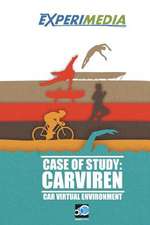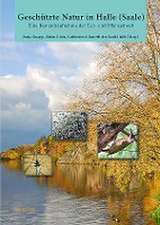Plant Biodiversity in Urbanized Areas: Plant Functional Traits in Space and Time, Plant Rarity and Phylogenetic Diversity
Autor Sonja Knappen Limba Engleză Paperback – 26 noi 2009
Preț: 379.86 lei
Nou
Puncte Express: 570
Preț estimativ în valută:
72.68€ • 75.90$ • 60.02£
72.68€ • 75.90$ • 60.02£
Carte tipărită la comandă
Livrare economică 15-29 aprilie
Preluare comenzi: 021 569.72.76
Specificații
ISBN-13: 9783834809230
ISBN-10: 3834809233
Pagini: 180
Ilustrații: 180 p. 8 illus. in color.
Dimensiuni: 148 x 210 x 11 mm
Greutate: 0.22 kg
Ediția:2010
Editura: Vieweg+Teubner Verlag
Colecția Vieweg+Teubner Verlag
Locul publicării:Wiesbaden, Germany
ISBN-10: 3834809233
Pagini: 180
Ilustrații: 180 p. 8 illus. in color.
Dimensiuni: 148 x 210 x 11 mm
Greutate: 0.22 kg
Ediția:2010
Editura: Vieweg+Teubner Verlag
Colecția Vieweg+Teubner Verlag
Locul publicării:Wiesbaden, Germany
Public țintă
ResearchCuprins
General Introduction.- Urbanization Causes Shifts of Species’ Trait State Frequencies – a Large Scale Analysis.- Does Urbanization Cause Shifts of Species’ Trait State Frequencies? – A Small Scale Analysis.- How Species Traits and Affinity to Urban Land Use Control Plant Species Frequency.- Changes in the Functional Composition of a Central European Urban Flora over Three Centuries.- Challenging Urban Species Diversity: Contrasting Phylogenetic Patterns across Plant Functional Groups in Germany.
Notă biografică
Dr. Sonja Knapp completed her doctoral thesis at the Department of Community Ecology at the Helmholtz-Centre for Environmental Research – UFZ in Halle and at the Department of Ecology, Evolution & Diversity at Frankfurt University, Germany.
Textul de pe ultima copertă
Urbanization is one of the main drivers of global change. It often takes place in areas with high biodiversity, threatening species worldwide. To protect biodiversity not only outside but also right within urban areas, knowledge about the effects of urban land use on species assemblages is essential.
Sonja Knapp compares several aspects of plant biodiversity between urban and rural areas in Germany. Using extensive databases and modern statistical methods, she goes beyond species richness: Urban areas are rich in species but plant species in urban areas are closer related to each other than plant species in rural areas, respectively. The urban environment, characterized by high temperatures and frequent disturbances, changes the functional composition of the flora. It promotes e.g. short-lived species with leaves adapted to drought but threatens insect-pollinated or wind-dispersed species. The author claims that the protection of biodiversity should not only focus on species richness but also on functional and phylogenetic diversity, also right within urban areas, to preserve a flora with a high potential for adaptation to changing global conditions.
Sonja Knapp compares several aspects of plant biodiversity between urban and rural areas in Germany. Using extensive databases and modern statistical methods, she goes beyond species richness: Urban areas are rich in species but plant species in urban areas are closer related to each other than plant species in rural areas, respectively. The urban environment, characterized by high temperatures and frequent disturbances, changes the functional composition of the flora. It promotes e.g. short-lived species with leaves adapted to drought but threatens insect-pollinated or wind-dispersed species. The author claims that the protection of biodiversity should not only focus on species richness but also on functional and phylogenetic diversity, also right within urban areas, to preserve a flora with a high potential for adaptation to changing global conditions.
Caracteristici
Plant Functional Traits in Space and Time, Plant Rarity and Phylogenetic Diversity




















